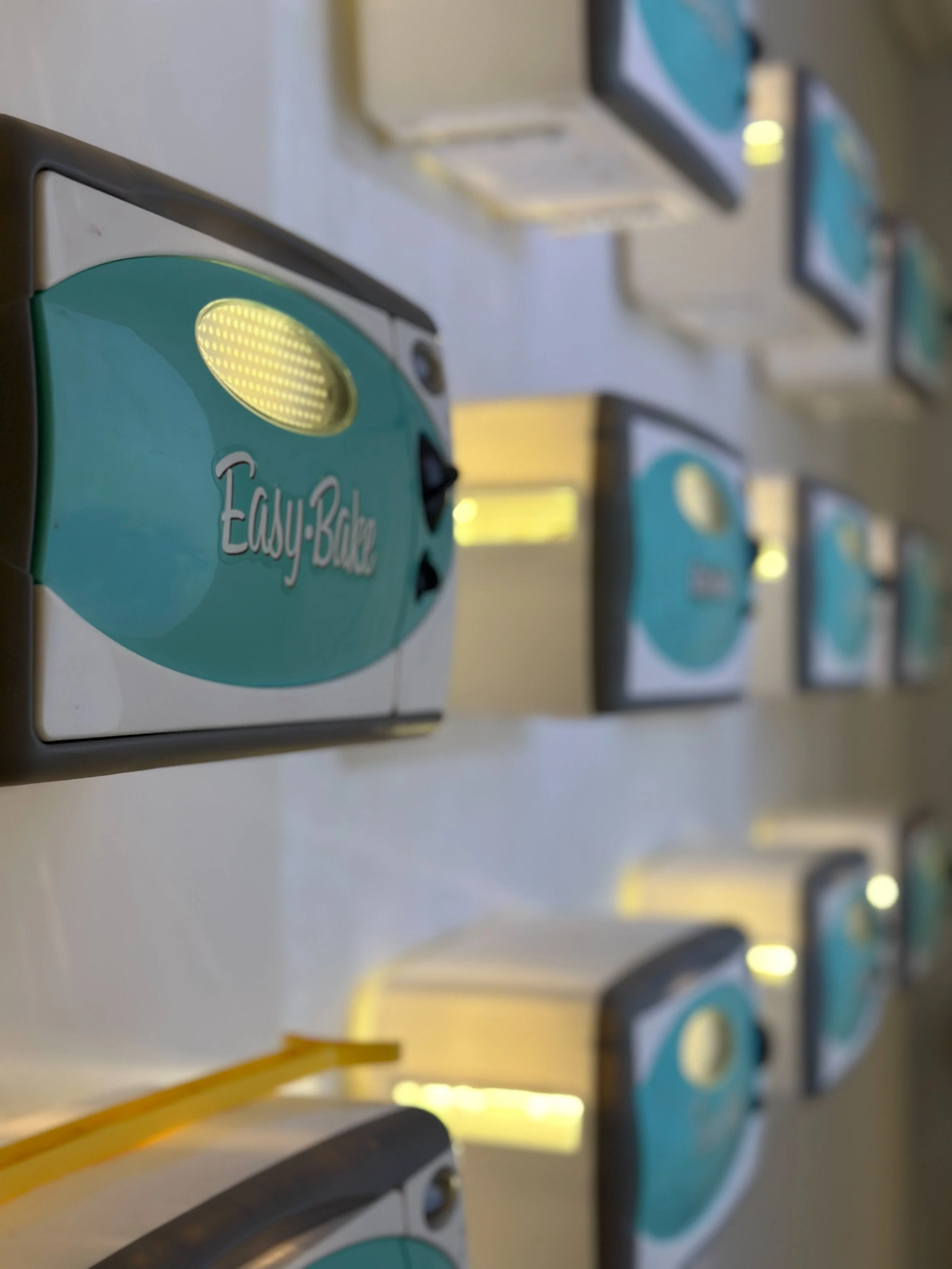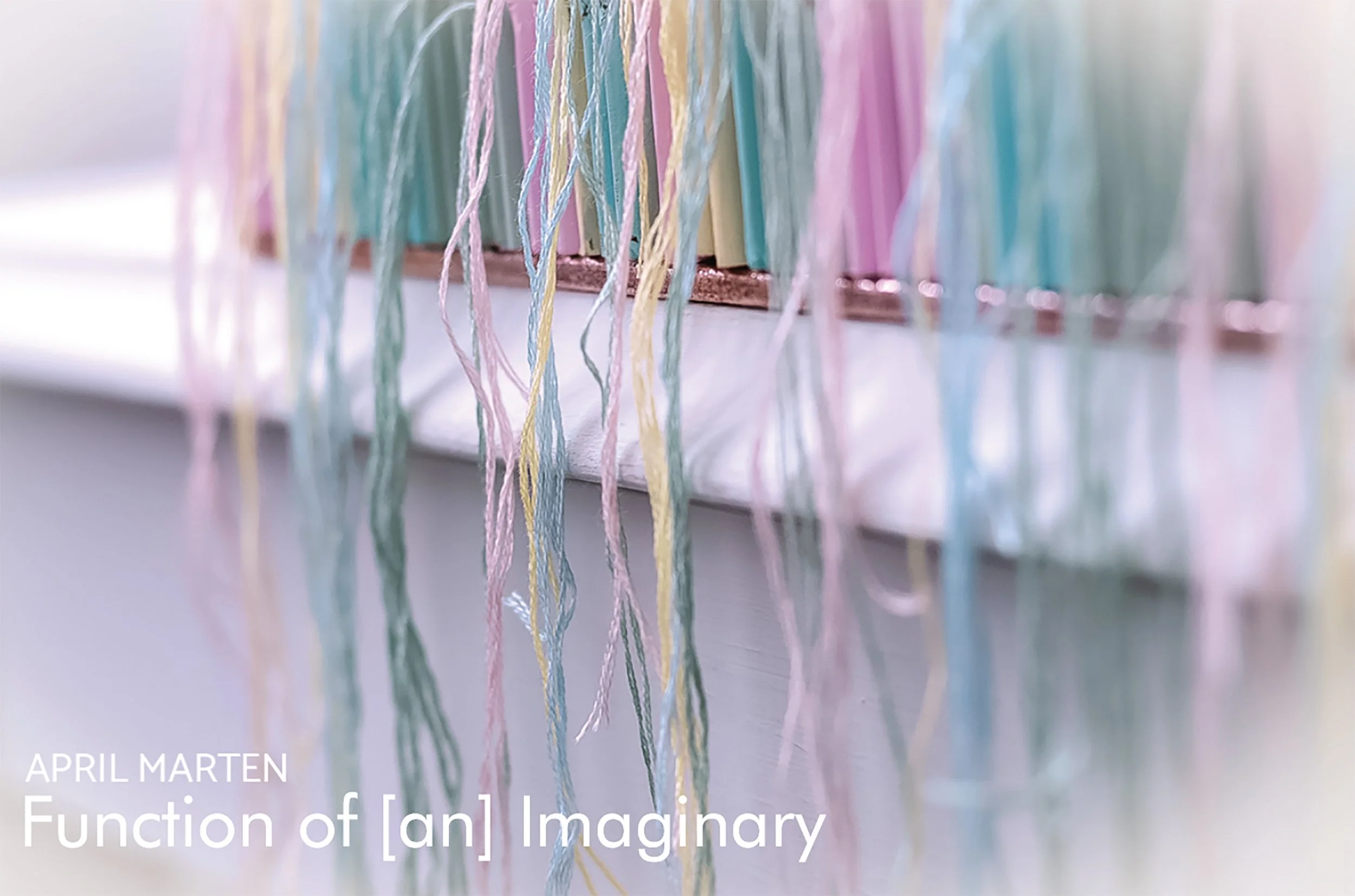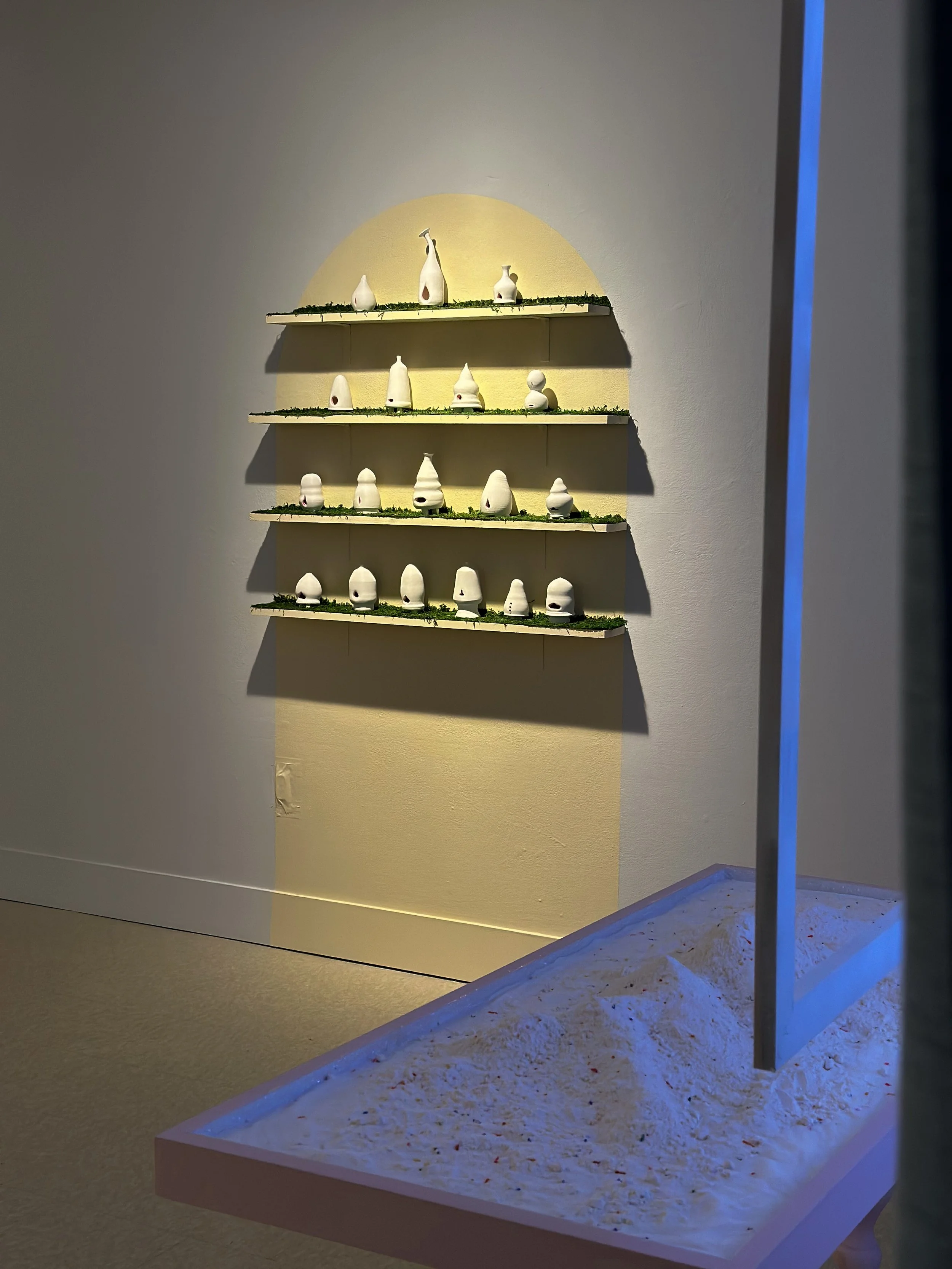WAFFLE HOUSE VISTAS
Micah Cash
Georgia Museum of Art
August, 2024 - June, 2025
Waffle House Vistas documents the built environment of the southeastern United States as seen through the windows of Waffle House restaurants. This photographic inquiry contemplates economic precarity and the social demographics of America’s working class through the lens of the beloved cultural fast-food icon.
These photographs ask viewers to look up from their hash browns and see the institutions and structures that create real, yet rarely acknowledged, boundaries that feel impossible to break through for much of this country. The narrative threads of poverty, race, and regionalism adjoin those of fast food, economics, and politics.
The artist visited over one hundred and twenty five restaurants in eleven states while following a strict set of rules: he sat down where he was able, ordered coffee and some food, and photographed what he saw from his seat. The images look out from booths and chairs, placing the viewer as both the patron and the witness.
Possessing broad appeal, the project has been featured and discussed widely. The accompanying photography book, published by The Bitter Southerner, has sold tens of thousands of copies across two editions.
Bloom On Burdens Creek Mural
Liz Haywood
HUB Research Triangle Park
Function of [an] Imaginary
April Marten
UNC Charlotte
August 28 - September 29, 2023
The Function of [an] Imaginary explores the tension between the human desire for a foreverness and the magnetic pull of institutional promises that define contemporary life.
The space invites personal contemplation, to wonder, to feel, to ask – to emancipate oneself from dominant social structures that push ideas as products designed to fill the impossible god-shaped hole.
Curatorial Statement
I am drawn to the use of iconography in contemporary art as a device to subtly communicate with viewers. It provides conceptual depth yet allows for a personal experience and individual interpretation of the art. Marten’s work focuses heavily on symbolism and what it means for a physical space or object to be a placeholder for an emotion, behavior, or belief. Though her work points out difficult truths in our social systems, April has found her own playful language to pull us into the conversation.
Her use of pastel colors and domestic items in Function of [an] Imaginary draws you in with its softness, femininity, and connection to fond childhood memories. Unexpected alterations such as unusual placement, change in color, or added texture drastically change what these items represent. In The Function of [an] Imaginary, April confronts the delicate overlap between seeking contentment and consumerism, and how ideologies and social systems play into that dynamic.
My fascination with the Frances Wasn’t a Saint series and Function of [an] Imaginary comes from April’s use of modern day materials as representation of the sublime or lack thereof. I would find myself daydreaming about it months later, still asking myself questions and still thinking about how I saw myself in the work. April’s work has always felt otherworldly yet also accessible. Now, Function of [an] Imaginary is available to all.








